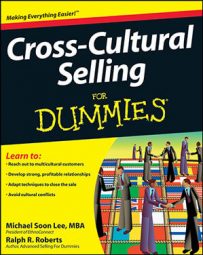Sharing information about your products or services builds trust with the people who purchase from your business. Your helpfulness can boost their confidence in your abilities, knowledge, and motives. An educated customer is an appreciative customer.
To be an effective educator, recognize that not everyone learns the same way, and culture can affect the way people absorb information:
Auditory-verbal: In the United States, most sales presentations are delivered verbally — the salesperson talks to the customer, and the customers listens passively (hence the term auditory-verbal). Studies show that only 30 percent of all audiences favor the auditory-verbal learning style, which leaves 70 percent who prefer obtaining information through other methods.
Kinesthetic (hands-on): Experiential education (also called kinesthetic learning) is becoming more and more popular in the United States and for good reason — about 30 percent of people learn best by doing. Customers can also be hands-on learners. They may not completely grasp the benefits of your product or service until they try it for themselves.
Visual-verbal: Visual-verbal learners, who make up about 20 percent of the population, need to see everything in black and white or, preferably, in color. Instead of listening to you drone on and on about your product, they’d rather read about it themselves in brochures, manuals, and white papers.
Visual-nonverbal: The final 20 percent of people are visual-nonverbal learners who learn best when information is presented in a graphical format, such as charts, graphs, photos, illustrations, and videos. They love diagrams and can assemble almost anything by just referring to the picture on the front of the box.
To connect with customers who have different preferred modes of learning, the best option is to create one sales presentation that accommodates all four learning styles — a multimodal presentation. This way, you don’t have to worry about which learning style a customer prefers because you have them all covered.
With a multimodal presentation, you may verbally describe a product while you show it or show pictures of it. You can provide handouts or brochures so that customers who are more visual-verbal can follow along in the text.
You may also include a multimedia presentation, complete with plenty of photos, charts, and even video to accommodate visual-nonverbal members of the audience. And for your kinesthetic learners, you can include a hands-on demonstration.

